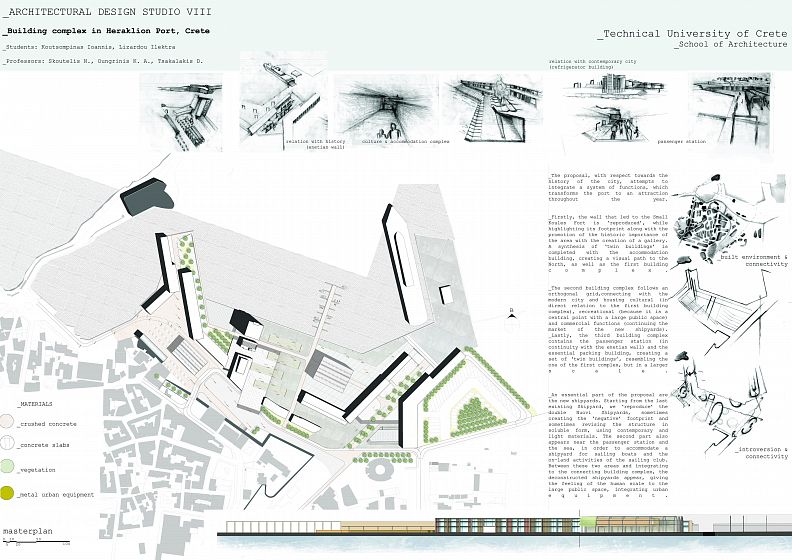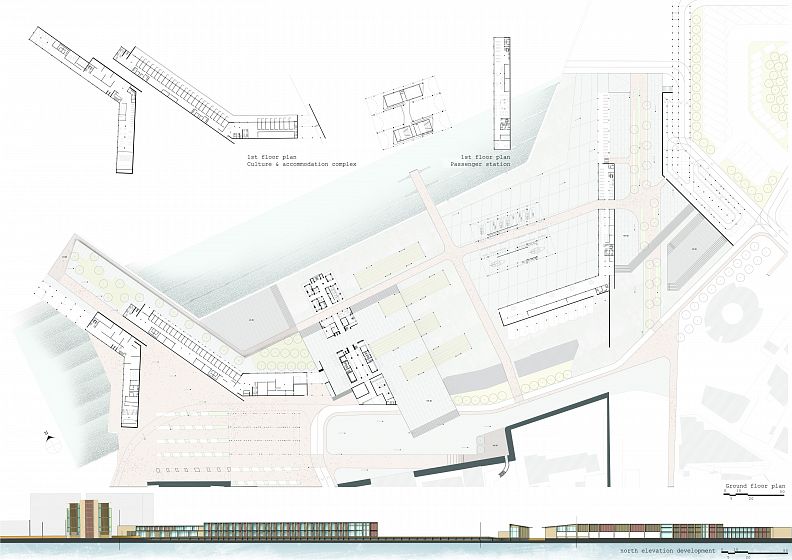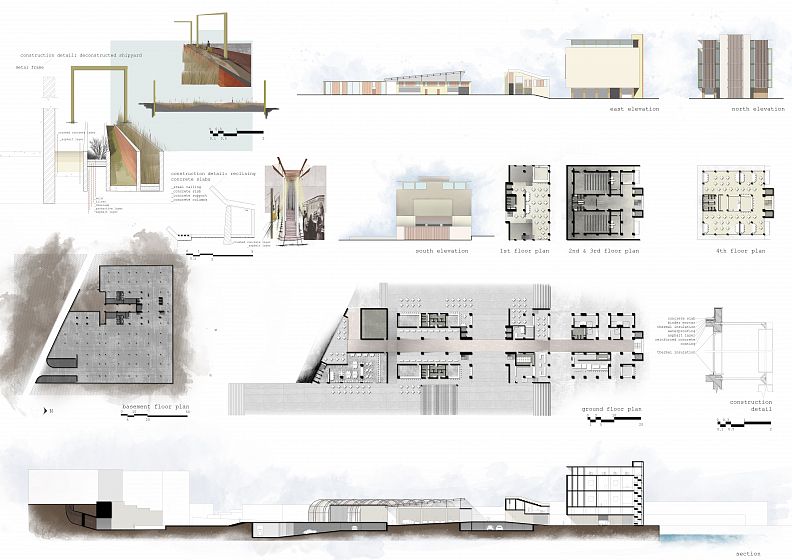Architectural Design Studio VIII / Building Complex in Heraklion Port, Crete

Project idea
The proposal attempts to tranform the port to an attraction throughout the year by integrating basic urban functions, while reclaiming the existing refrigerator building and ‘regenerating’ the lost part of the enetian wall.
Project description
At first, a cultural building consisting of slabs follows the trace of the wall that led to the Small Koules Fort. A synthesis of ‘twin buildings’ is completed with the accommodation building, creating an elongated path that connects the city and the sea, and a calmer environment near water.
The second complex connects the overall proposal with the most contemporary layer of the palimpsest of the city by following an orthogonal grid. It also houses cultural (in direct relation with the first complex), recreational (because it is a central point with a large public space) and commercial uses (continuing the market of the new shipyards).
The last complex consists of a repetition of the ‘twin buildings’ in different scale (due to reasons of integration with its surroundings), accommodating the passenger station and the necessary parking building.
A part of great importance is the ‘reproduction’ of the old double shipyards next to the last one existing either via creating their ‘negative’ footprint through vegetation or by revising the structure in soluble form with light materials (metal), giving a sense of the human scale to the vast urban space and creating the necessary urban equipment. These ‘shipyards’ repeat near the passenger station and the sea, accommodating the sailing club and the necessary shipyard for small sailing boats. A different, more subtractive form, lays between the second and the third building complexes for the same reasons.
Technical information
A variety of urban spaces in different scales and levels, capable of accommodating different activities, binds together the overall proposal, while the necessary extensive parking space is ‘hidden’ underground or behind the blind wall of the last building to the East, while at the same time regulating the circulation.
Co-authors
Lizardou Ilektra
Koutsompinas Ioannis





